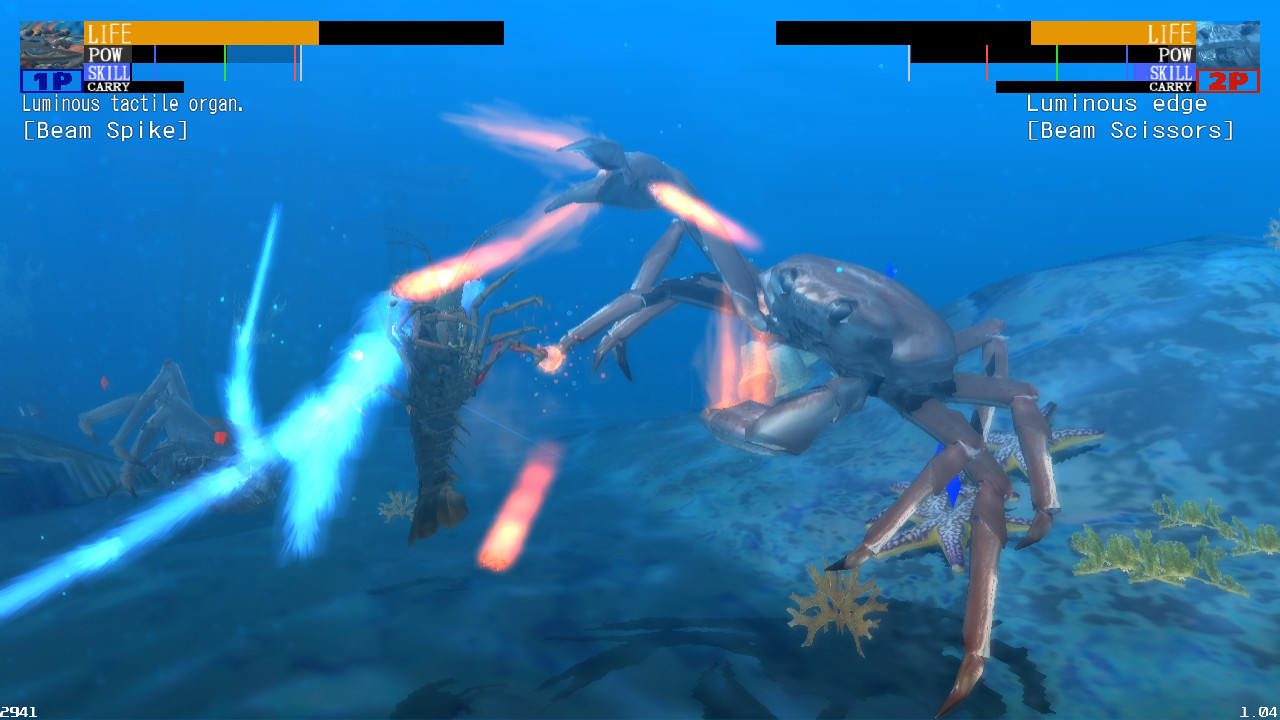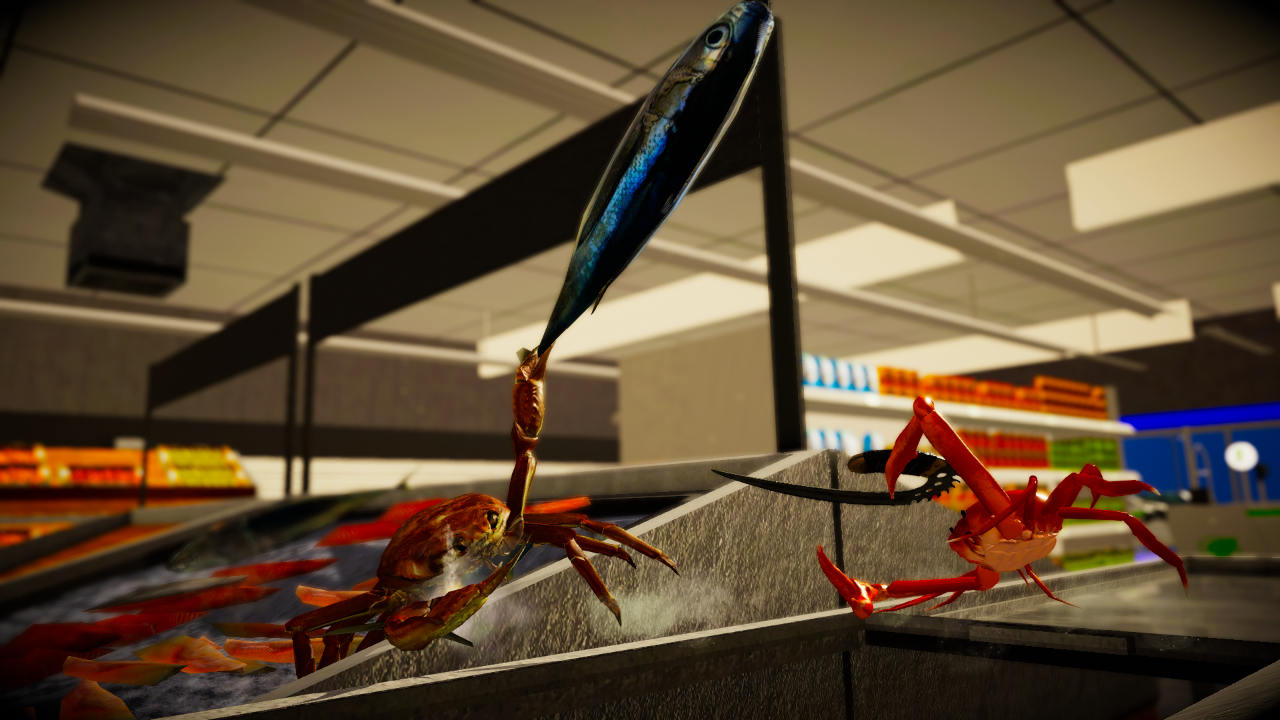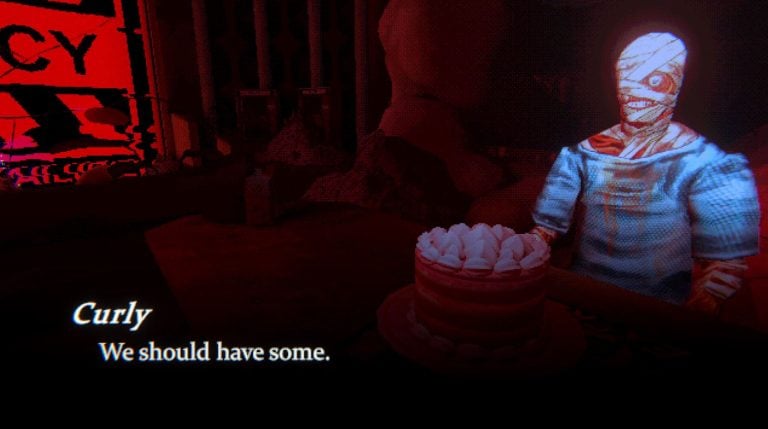Publication date of the original Japanese article: 2020-07-30 17:34 (JST)
Translated by. Nick Mosier
In Fight Crab, you become a crab and fight other crabs. The crab battles are depicted like a physics simulation with weapon damage being calculated based on the kinetic energy of how the weapon is swung. There’s also a lot of detail poured into the crabs that you won’t see at first glance. We had the pleasure of interviewing Nusso, the creator behind Fight Crab, so let’s jump into it.
*Disclosure: The Steam version of Fight Crab is published by PLAYISM. PLAYISM is part of Active Gaming Media, which is also the owner of this website.
—Congratulations on the release of Fight Crab on Steam and the Nintendo Switch. Could you give us an introduction to the game?
Fight Crab is a new take on 3D action games where you control a crab and fight other crabs. While it’s a physics simulation, crabs are tough and can withstand even the most intense sword fights. You can move your crab’s pincers as you please to create your own crab combat style. You have a lot of freedom so you can fight to the bitter end. But don’t worry, crabs are tough so they can take it.
—For this interview, I want to focus on you. Since releasing Neo Aquarium when you were a student, this is the third game you’ve released about sea creatures. What was it that got you started in game development in the first place?
Neo Aquarium was originally a graduation project for school. I wasn’t enrolled in a game development program so I couldn’t just simply make a game for the project. I went with the concept of showing the special characteristics of these creatures through a game as art. In order to do that, I really focused on working the construction of the creatures into the gameplay and the water simulation.

—Could you tell us why you became so fixated on sea creatures? Is there a reason you like them?
I guess it came from researching various things for Neo Aquarium and starting to think sea creatures were really interesting. A big reason is that sea creatures are mostly seen in daily life as food. As a kid I was always more interested in monsters than I was in superheroes, but growing up in Tokyo I never even saw as much as a lizard. I did see a lot fish and crabs at the market though. Besides dogs, cats, and birds, they were the largest and the wildest creatures I could find in daily life.
—And is there something about crustaceans in particular that drew you in?
Those hard shells. Bugs are good too, but their legs are slender and they don’t seem very tasty so crustaceans won out.
—Let’s move on to your career. According to this article on Steam, you worked on Sega’s Yakuza team for 5 years as a programmer. What were you working on during that time?
I worked on things like implementing human character animations for Binary Domain, the dance battle minigame in Yakuza 5, using the Unity engine for Sanrio Fantasy Theater, and other projects that weren’t released.
—Was there any experience you gained on those projects that was particularly useful for making Fight Crab?
Binary Domain was a game with a lot of complicated animations with various reaction animations for what happens to the characters and inverse kinematics when grabbing objects. I wasn’t in charge of it, but there was a boss named Spider that had multiple legs and things like that. It doesn’t apply directly to Fight Crab, but it probably had an influence.

—What brought you to developing Fight Crab? Would you not be satisfied working on human characters?
If I had to say, having worked on Yakuza and trying to make human characters, knowing how hard that is was a big reason. Humans are like a bottomless swamp and I thought, “Yeah, I’d rather have something besides humans fight.” We’re all people so we’re really critical of how human characters are animated and shown. I thought it would be best to avoid that for an indie action game. Even if I don’t give the crab an expression, nobody will complain, right?
—Yeah, we don’t really understand crab expressions. I think having fights where you don’t drain your opponent’s HP bar, but have to flip them over to win is a unique mechanic. Why did you decide to do it this way?
It’s this way in all games, but winning a fight by doing damage isn’t very convincing to look at. Like the character is so lively for the entire fight but gets knocked out by a little kick? Super Smash Bros. is an obvious one, but Sekiro: Shadows Die Twice has finishers and stealth kills to try and solve this problem.
It’s hard to dodge the opponent’s attacks in Fight Crab so a system where you have to be ready to take hits while attacking was necessary. As long as you aren’t taking a direct blow to the body, you won’t be knocked out.
—If you did make a game where humans fought, what kind of game would it be?
Hmm… Having fights with proper animations would be really difficult, so I’d probably have players fight with avatars using various weapons and gimmicks. Using tools is one of the major human characteristics after all.

—What’s something you really focused on in Fight Crab?
I really tried to fuse the physics simulation elements with the gameplay. For example, weapon damage is calculated based on the kinetic energy of the attack. The result is a weapon like a Japanese sword delivers a lot of damage which makes sense given shape of the weapon.
—That’s interesting. One the other end, is there a weapon that isn’t very effective?
The whip sword that often appears in anime (like Galient Sword). It looks really cool but if it doesn’t have something like a flail on the end, it’s hard to really give it a lot of force. In Fight Crab, I’ve forcibly sped up these weapons, but chain or string type weapons are difficult to make in current physics engines.
—The name Fight Crab is reminiscent of Fight Club which will be well received overseas and might even make Japanese players think it’s an overseas game. How did you decide on the name?
It actually wasn’t me…
If you call it FightCrab (not Fightclub) it will probably have good googleability!
—As an indie game developer, you’re regularly releasing unique games. What’s your mindset when setting out to make a game?
When I start working on a game I’m thinking, “I just thought of the best game ever! I want to make a living working on this forever!” And by the time it’s done I’m thinking, “That’s about as interesting as I can make it. Now to move on to the next one!”
I don’t really have a spiritual successor that I want to make or a dream project that I need to complete to feel satisfied. It’s important for me to be curious and keep searching for things that don’t already exist.
—Speaking of which, have you already thought up what you’re going to make next?
I have a lot of ideas. I kind of feel like I’ve reached the limit of what I can do visually with these assets that I bought so I want to spend some time experimenting on visuals.
—To wrap up, could you give a message to our readers?
With my previous games I didn’t get all these interview opportunities so this is really great. This is a game I mostly made by myself and it’s packed with a lot of fun that you can relax and enjoy. I’d be really grateful if you try to master the way of the crab battle.
—Thank you for interviewing with us today.





